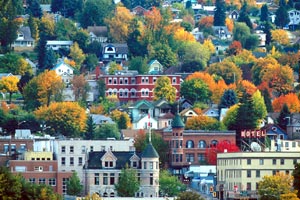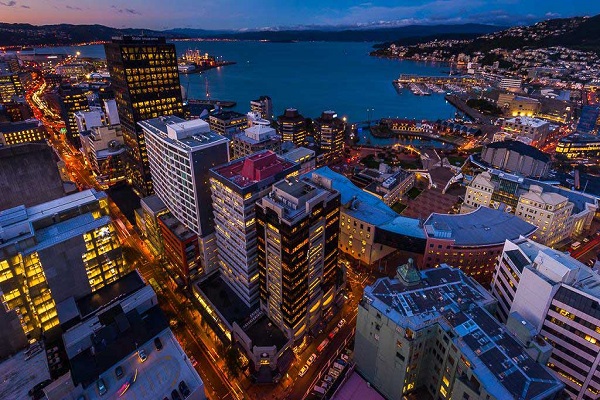Albania
Find Eduxpress Programmes
In the academic year 2010/2011, a total of 86 345 full-time students (excluding Ph.D. students) and 19 084 part-time and distance learning students were enrolled in public higher education institutions and 26 784 students in private institutions, with a full-time teaching staff of 4 053 persons and part-time teaching staff of 5 727.
Higher Education system in Albania is a binary system. There are three kind of higher institutions in Albania:
All universities and academies give diplomas of university level (bachelor degree). Only Nursing Higher School offer non-university level diplomas. Some non-university level studies offered from different universities will be reconstructed as non-university higher schools. Non-public higher education will be developed in the near future.
Structure of higher education degrees/qualifications
The following diplomas are awarded:
Graduate
Post-graduate
Universities award all these diplomas. Academies award only university diploma / post-university qualifications. Nursery schools award only non-university diplomas.
Courses are offered in English and French.
Find the best information about what it’s like to study in Tirana, including degree course offers, career opportunities, student life, living costs, and more.
Foreign students have the same procedures, like Albanian students. First, they must have an exam on Albanian language.
The admission of students to a first cycle study programme and second cycle integrated study programme is based on one of the following criteria: students must have finished successfully the state Matura or must have received a similar qualification for study abroad equivalent to Matura or a degree from a higher education institution. Through State Matura, Albania has established a so-called Merit and Preference system.
For admission to a second cycle study programme students must have a first cycle degree or another equivalent degree for study abroad.
The recognition for academic purposes, in order to study in different second or third study cycles, is completed by the higher education institutions in accordance with legislation and international agreements.
To study an English-taught programme in Albania, you will need to demonstrate your language skills. The following are some of the most popular English language tests recognised internationally:
The academic year starts in October. The duration of academic year is from 38 - 42 weeks. The base unit of the academic year is the semester. One academic year has two semesters. There are three examination periods: the winter, summer and autumn sessions.
Albania is a small country with a landmass of 28.748 sq km (about 11.000 sq miles). It is situated in the western part of the Balkan Peninsula in the southeastern part of Europe. It shares borders with Montenegro and Kosovo to the North and Northeast, Macedonia to the East and Greece to the South. To the West, Albania has a coast that adjoins the Adriatic and Ionian Seas.
The Adriatic Sea separates it from Italy via the Strait of Otranto (72 km/45 mi). Much of Albania’s surface is mountainous – the average height above sea level is 708 m, (2,336 ft) and its highest peak, Mount Korab on the Macedonian border, is 2.753 m (9,085 ft). Most of the population lives in the south-central lowlands and on the coastal plain.
Over a third of the territory of Albania – about a million hectares (2.5 million acres) – is forested and the country is very rich in flora.
In antiquity, present-day Albania was settled by the Illyrians. The Greeks arrived in the 5th century B.C. to establish self-governing colonies. After its collapse in the year 30 B.C., Illyria came under the control of the Roman Empire. Upon the division of the Roman Empire in 395 A.D., Illyria became a part of the Byzantine Empire. Three early Byzantine Emperors were Illyrian in origin. Ongoing invasions by Visigoths, Huns, Ostrogoths, and Slavs continued through the 5th and 6th centuries.
In 1344, Albania was annexed by Serbia. Their control of the area was brief, though, as the Turks defeated the Serbians in 1389. At this point, the Venetians controlled some coastal towns but with the Serbian defeat, the entire region became vulnerable to Ottoman attack. The Ottomans overwhelmed Albanian resistance and took control of the country in 1479.
For more than 400 years, Albania was under Ottoman rule. The subsequent insurrection efforts eventually brought about the proclamation of the independence of Albania in 1912. King Zog I ruled for nearly fourteen years until the country was invaded by Italy in 1939. In November of 1944, the Communist Party assumed power. For nearly fifty years, the regime enforced a policy of strict isolationism. The Democratic Party assumed control and led the country from 1991 until 1997.
Looking to the future, Albania’s leaders hope to integrate the country into the European Union (EU). Albania is now a member of the North Atlantic Treaty Organization (NATO) and part of many other international organizations.
Since the fall of Communism, the development of the Albanian economy has been fuelled primarily by the service and construction industries, though tourism has recently played an increasing role in the economy and is growing rapidly.
Many people are curious to explore a country whose borders were closed to travel for many years. Given the continued development of both summer and winter resorts, people all over the world have begun to think of Albania as a tourist destination.



